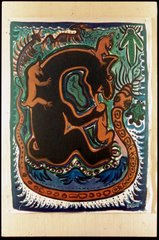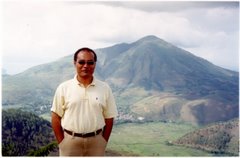
Environment and Urbanization, Vol. 10, No. 2, October 1998
Water Watch: A Community Action Guide
Abdur-Razzaq Lubis, 1998, 96 pages.
Water Watch: A Community Action Guide
Abdur-Razzaq Lubis, 1998, 96 pages.
Published by and available from APPEN
(Asia- Pacific People’s Environmental Network)
120 Armenian Street, 10200 Penang, Malaysia.
WATER PROBLEMS – of supply, contamination and waste – are critical indicators of the limits of urban growth and flaws in urban development. This work is a source-book aimed at raising popular awareness of water problems and at empowering communities and individuals with simple ways of conserving and managing their water.
WATER PROBLEMS – of supply, contamination and waste – are critical indicators of the limits of urban growth and flaws in urban development. This work is a source-book aimed at raising popular awareness of water problems and at empowering communities and individuals with simple ways of conserving and managing their water.
Step by step illustrated instructions highlight how simple projects suitable for community based organizations and schools can raise awareness and develop knowledge of local watercourses and watersheds. The book also contains a glossary, a selective bibliography and a directory of agencies around the world working with water. Aphorisms and other quotes as well as boxes and tables highlight the points made in each chapter and provide additional information.
The book begins with a profile of water including aspects of chemistry, biology and belief, and shows how water should be viewed as a service rather than a product in the market economy. It also considers the areas of greatest water stress (measured by the volume of water used as a percentage of the total water available) with Africa, South Asia and the Middle East suffering the highest levels of water stress.
The hydrological cycle is explained with a discussion of the roles of surface and ground water and watersheds and watercourses. These are described in the context of topography and vegetation.
Wetland ecology is outlined in a variety of contexts, and after describing the range of natural and human uses to which they are put, there is a guide to making inventories and databases of watersheds as a basis for mapping local supply, including tips on dealing with regulatory and other authorities to best advantage.
Straightforward instructions on how to survey and monitor community water are given as an introduction to the longer term improvement of supplies and waterways. Suggestions such as the adoption of streams by schools are advanced as a means of developing community involvement in their water supply.
The proposed community action plan emphasises the importance of education, accessibility of institutional management and public participation, as well as providing information on the technical aids available to support the proposed activities.
There are also hints on how to make better use of water at the individual rather than the community level. The book ends with some extracts from world literature about water and a summary of the statements that have been made about water resources by international
agencies and conferences.
agencies and conferences.



1 comment:
You are smart blogger. I am a writer of
40 Hari Di Tanah Suci.
Post a Comment